
| WWT Shows | CLICK TO: Join and Support Internet Horology Club 185™ | IHC185™ Forums |

|
• Check Out Our... • • TWO Book Offer! • |
Welcome Aboard IHC185™  Internet Horology Club 185
Internet Horology Club 185  IHC185™ Discussion Site Main Page
IHC185™ Discussion Site Main Page  Technical, Shop Talk and Internet Links
Technical, Shop Talk and Internet Links  Clock Repair Questions and Answers
Clock Repair Questions and Answers  Waltham Clock
Waltham Clock
 Internet Horology Club 185
Internet Horology Club 185  IHC185™ Discussion Site Main Page
IHC185™ Discussion Site Main Page  Technical, Shop Talk and Internet Links
Technical, Shop Talk and Internet Links  Clock Repair Questions and Answers
Clock Repair Questions and Answers  Waltham Clock
Waltham ClockGo  | New Topic  | Find-Or-Search  | Notify  | Tools  | Reply to Post  |  |
Would anyone have any information about this type of Waltham wall clock? Inside there appears to be a small movement, with a shaft to the side for winding and setting. Thanks 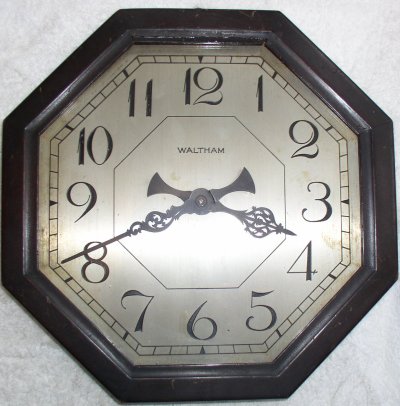 | |||
|
With the metal back cover removed. Its missing the shaft and knob. 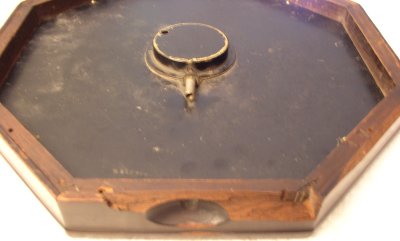 | ||||
|
Waltham Clock Company began in 1897, in Waltham, Mass. they mostly made tall case clocks. They did have wall regulators and others as well. Many of the tall case clocks were top of the line with tubular bells. In 1913 the Waltham Clock Company was bnought out by Waltham Watch Company. For about 2 years it was known as Waltham Watch and Clock Company. After that all production was under the Waltham Watch co. name. In the 20s production shifted from tall case clocks to mantel and wall clocks. Pendulum clock production ended during the great depression, electrics continued through the 30s. The above information is from American clocks by Tran Duy Ly. I like the look of that clock. The hands are especially attractive. I could not find any with similar hands in those Walthams pictured in the book. Maybe some of the watch folk can tell us if that is a watch movement in that clock. Could you get a picture of the movement? great clock! Tom Seymour NAWCC #41293 IHC #104 IHC Exec.V.P. | ||||
|
This is one of many, many varieties of desk and wall clocks that Waltham made using their 37-size, double-mainspring, 8-day movement. It has a lever escapement and from 7 to 15 jewels. I have seen them in various metal and wood cases from plain to fancy. This movement was also commonly used for automobile clocks and folding travel clocks. Mel Kaye has written some great articles on these in recent Bulletins (see your October 2001 and April 2002 issues). | ||||
|
Here is a typical movement (this from an automobile dashboard clock) ~5.5 cm across the back 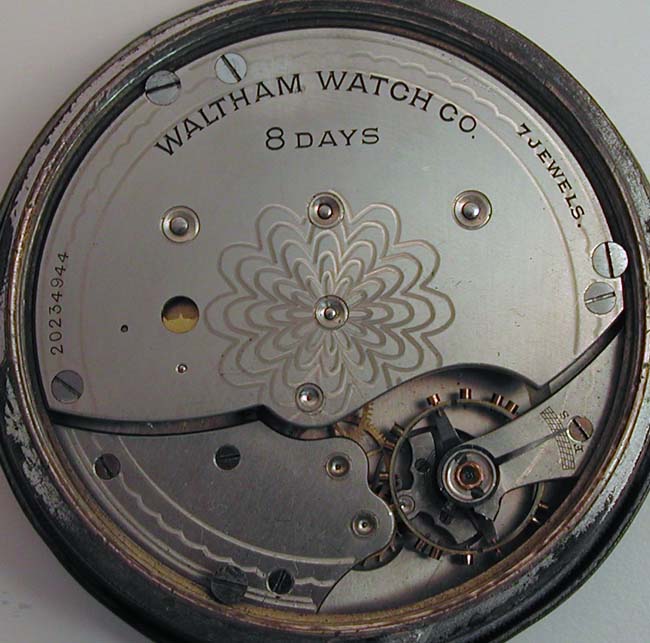 | ||||
|
Jerry, Thanks for the info and the lead to the articles in the Bulletin. The discussion of "Is it a clock or a watch" was very interesting. It got into some of the fundamental differences between clocks and watches. If I read it correctly, this is a clock movement because of its size. Its size, however, is described in watch size terms. It is not, however, made like a clock, with generous spacing and end shake. It is made like a watch with close tolerances and "dense" in terms of the space it occupies. It was good reading it again. thanks!! Tom Seymour NAWCC #41293 IHC #104 IHC Exec.V.P. | ||||
|
Wayne...I found these in my 37 size misc box tonight. Maybe one of these shafts and knobs is what you need. Let's see a close-up of the winding arbor and measure the length to see if any of these may fit. Geo NAWCC #78594 Local Chapter #76 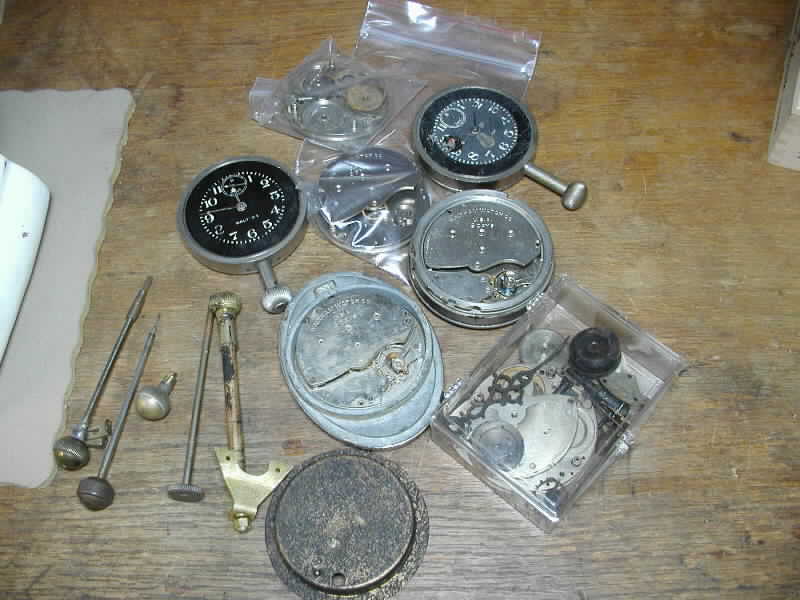 | ||||
|
Tom & Geo Thanks for the information - the distance from the adapter to the edge of the clock is approx 4". The extension appears to thread into the adapter - The wood is damaged where the winding/setting knob would have been - I am going to remove the movement and take photo's soon - then I will decide if I will be able to repair it, or should I pass it on to some else with better repair skills than mine (mine are very limited). [This message was edited by Wayne C. Anderson on September 22, 2003 at 7:41.] 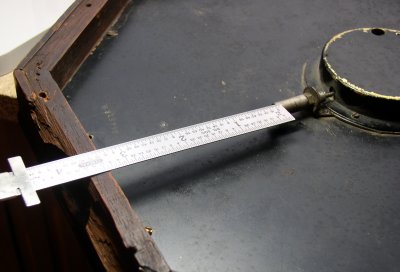 | ||||
|
Geo A close up of the arbor (adapter) - the extension screws into the adapter. Thanks 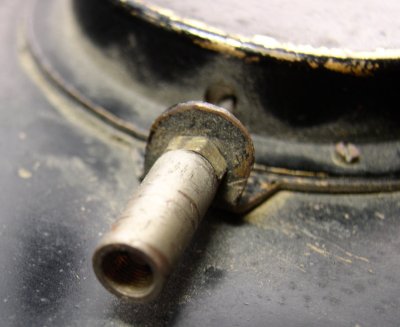 | ||||
|
| Powered by Social Strata |
| Your request is being processed... |
|
©2002-2025 Internet Horology Club 185™ - Lindell V. Riddle President - All Rights Reserved Worldwide

